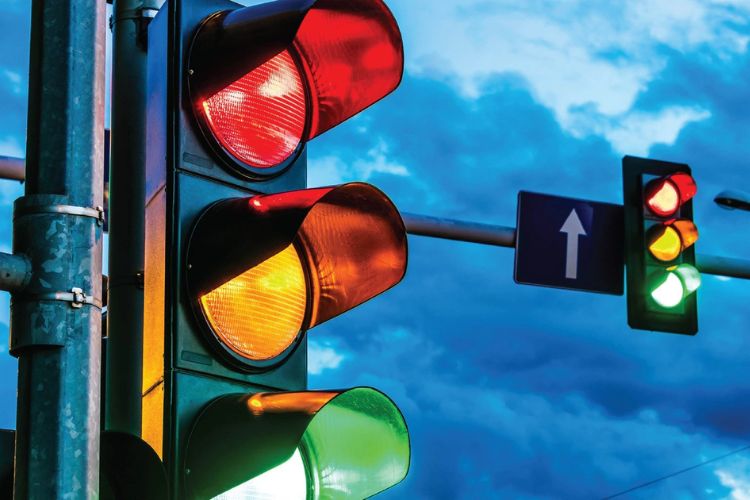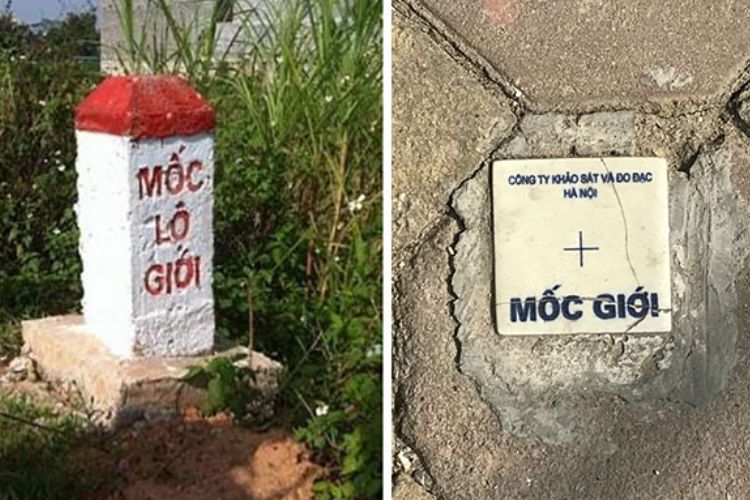The meaning of traffic signals and arrow lights is specified in Article 10 of National Technical Regulation QCVN 41:2019/BGTVT on Road Signs.
1. Types of traffic control signals
– The main traffic control signal light applies three types of signal colors: green, yellow and red; Mainly circular in shape, installed vertically or horizontally.
+ Signal order is installed vertically: red light above, yellow light in the middle and green light below.
+ Signal order installed horizontally: red light on the left, yellow light in the middle and green light on the right side in the direction of traffic.
– Signal lights, in addition to the three main types of lights, are also supplemented with a number of other lights depending on the size of the intersection and traffic organization.
+ Lights with arrow shapes or shapes with symbols in accordance with the provisions of QCVN 41:2019/BGTVT, installed on a horizontal surface with signal lights. The images on the lights can be a type of vehicle or a pedestrian.
+ Each light signal may have an arrow. If the arrow indicates the direction where left turns are allowed, U-turns are also allowed, unless there is a sign numbered P.124 (a,b) “No U-turns”.
– Countdown timer (when operating normally) has the effect of signaling the effective time of the light.
– The signal light has a red cross, signaling that the vehicle must stop. In case the vehicle is already in the intersection, it must quickly exit the intersection.
2. Meaning of signal lights
– Green signal: allowed to go.
– The yellow signal signals the change of the green light signal to red. The yellow signal is on, you must stop before the stop line. In case you have gone over the stop line or too close to the stop line, if you stop and find it dangerous, you can continue.
In case the yellow signal is flashing, you can go but you must slow down, pay attention, and give way to pedestrians crossing the street or other vehicles according to the provisions of the Road Traffic Law.
– Red signal: signals to stop before the stop line. If there is no stop line, you must stop before the signal light in the direction of travel.
– In case there is no stop line, the location of the nearest signal light in the direction of travel is considered the stop line.
– At a time, the same set of signal lights can only light one of three colors: green, yellow or red.

3. Meaning of arrow-shaped lights
– If the light has a green arrow light, vehicles can only move when the arrow signal is on. The arrow signal allowing a left turn also allows a U-turn unless there is another signal prohibiting a U-turn.
– If the light has a green image of a certain type of vehicle, then only that type of vehicle is allowed to go.
– When the green arrow signal is turned on at the same time as the red or yellow signal, vehicles traveling in the direction of the arrow must give way to vehicles traveling from other directions that are allowed to go.
– When the red arrow signal is turned on at the same time as the main green light signal, the vehicle must not go in the direction of the arrow. Places with red arrows should arrange waiting lanes for vehicles going in the direction with red lights.
– When the red signal with the image of a certain type of vehicle lights up at the same time as the main green light signal, that type of vehicle cannot go. Where there are red vehicle lights, a waiting lane must be provided for that vehicle.




